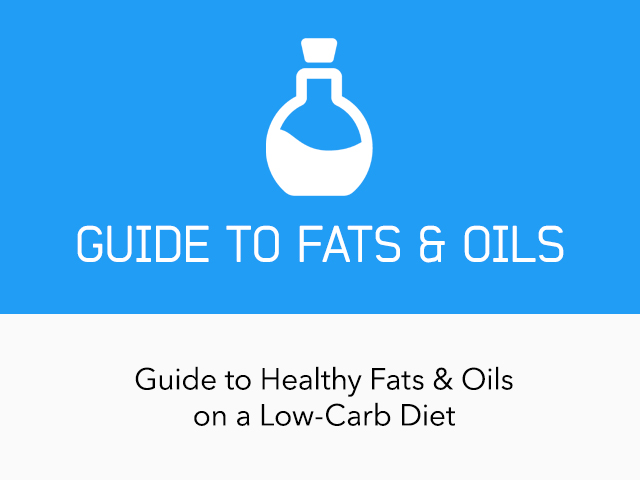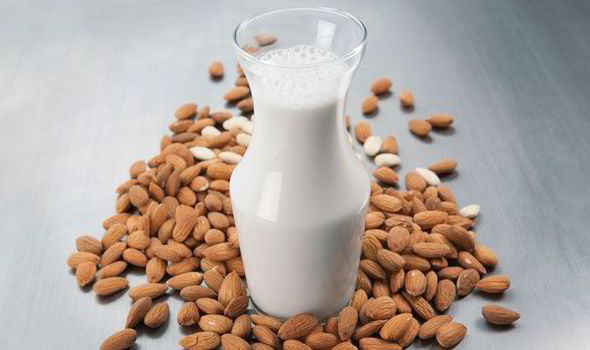So it’s Motivated Monday and I wanted to pass you along some information that might be beneficial to your diet. Summer is here and if your not shredded or where you need to be at, I suggest you continue reading this article to attain that sexy flat belly you wanted since January 1st.
You probably know that the ketogenic diet is a very low-carb, high-fat, and moderate-protein diet, but do you know the best foods to eat to acheive maximum success?
So here are the top 5 foods for keto success 🙂

Like any diet, the ketogenic diet is not about a specific food; it’s about your entire body of work. Now, if you know anything about going keto (and the typical keto foods), you know it’s a very-low-carbohydrate, high-fat, moderate-protein diet.
Given the constraints, I’ll give you three guesses as to what types of foods are BEST. If you guessed fat, fat, and more fat, then you’d be right on point. And while protein-rich foods are also a staple, it’s not a high-protein diet. In fact, too much protein can keep you from getting into or staying in ketosis.
While there’s really no such thing as a “ketogenic” food, here are the top 5 you’re most likely to find if you decide to go keto!
One of the best keto foods is coconut oil (along with shredded coconut, coconut milk, coconut flour, and other coconut-based foods). See, about 70% of the fat found in coconut oil is a very special type called medium chain triglycerides (MCTs for short).

MCTs are pretty awesome. They’re easily absorbed, metabolized, burned for energy, and the body has a hard time storing them as fat. But that’s not all—MCTs are readily converted into ketone bodies. Perhaps that’s why they’ve been shown to suppress appetite, boost metabolism, lower body weight, reduce belly fat, improve insulin sensitivity, and improve markers of metabolic health.1–6 Winning!
With right around 80% of calories from fat, avocados are another one of the near-perfect keto foods. Plus, they’re incredibly versatile and downright tasty!

Avocados are also nutrient-dense, containing 6 grams of fiber and upwards of 20 essential nutrients. They’re a great source of potassium, which is an important mineral to consume on the ketogenic diet. In fact, active people should take in about 2 – 3 grams of potassium per day.7 One-half an avocado gets you almost 25% of the way there, providing just under 500 mg.
Butter, Ghee, Heavy Cream, Sour Cream, and Full-Fat Cheese

Full-fat dairy is high in fat and low in carbs, making it keto-friendly. You may be thinking, “What about the saturated fat?” Give me your hand, so I can pull you out of that deep, archaic rut. It’s now well-established and widely accepted that saturated fat is not associated with heart-related issues and other adverse health outcomes.8
Want to know something even more interesting? More and more studies are showing full-fat dairy is related to less belly fat and better blood pressure, cholesterol, triglycerides, and glycemic control. And these better health outcomes are actually thought to be brought on by the saturated fats found in dairy.9

Also, dairy fat is a natural source of MCTs.10 Even cooler, butter is the best dietary source of butyric acid (aka butyrate), which fuels our immune cells, stimulates the release of appetite-suppressing hormones, and even helps protect the brain.11
So, go ahead: add that cream to your coffee. Slather some butter onto your veggies. Just make sure you choose butter and cream from organic, pasture-raised cows, which contains significantly more healthy fats (i.e., omega-3s and CLA) compared to conventional dairy.
Fatty Fish

Cold-water fatty fish are the best dietary sources of the all-important omega-3 fatty acids DHA and EPA, well-known for supporting:
• Heart health15–17
• Brain health, cognitive function, and mood18–23
• Eye health and vision24–26
• Skin health27,28
• Immune function29
• Metabolic function and body composition30–32
• A healthy inflammatory response33
Recent research has shown DHA and EPA may also have anti-aging properties.34–36 Pretty cool stuff, right? According to health organizations like the American Heart Association, it’s a good idea to eat fatty fish at least twice a week.37
Eggs

Eggs have been touted as “nature’s perfect food,” “one of the healthiest foods on the planet,” and “nature’s multivitamin.” You can add to that list “one of a ketogenic dieter’s best friends” since eggs contain virtually zero carbs. What they do contain are healthy fats and a good source of high-quality protein.
Eggs also contain “bonus” nutrients like choline, lutein, and zeaxanthin, which have been referred to as “natural sunglasses” due to their ability to shield the eyes from potentially damaging UV rays. These nutrients boost brain health and cognitive function, eye health and vision, and heart health.
They have also been shown to boost the body’s production of brain-derived neurotrophic factor (BDNF), an important growth factor for the brain and central nervous system that plays a key role in cognitive function, mood, and mental health.12,13 All of this makes eggs a necessary addition to any list of the top keto foods.
Just like dairy, it’s best to choose eggs from pasture-raised hens, shown to have 2 ½ times more omega-3 fats compared to conventional eggs.14
Eat these food for a flat and sexy belly. 🙂 You will thank me later for it when your naked in the mirror!

But all of this is just advise. You can do whatever the fu$% you wanna do! 🙂
Your friend and Coach,
Crystal aka Barbell Barbie.NY
References:
St-Onge M-P, Ross R, Parsons WD, Jones PJH. Medium-chain triglycerides increase energy expenditure and decrease adiposity in overweight men. Obes Res. 2003;11(3):395-402. doi:10.1038/oby.2003.53.
St-Onge M-P, Bosarge A. Weight-loss diet that includes consumption of medium-chain triacylglycerol oil leads to a greater rate of weight and fat mass loss than does olive oil. Am J Clin Nutr. 2008;87(3):621-626.
Nosaka N, Maki H, Suzuki Y, et al. Effects of margarine containing medium-chain triacylglycerols on body fat reduction in humans. J Atheroscler Thromb. 2003;10(5):290-298.
Lee JH, O’Keefe JH, Lavie CJ, Marchioli R, Harris WS. Omega-3 fatty acids for cardioprotection. Mayo Clin Proc. 2008;83(3):324-332. doi:10.4065/83.3.324.
Morris MC, Evans DA, Bienias JL, et al. Consumption of fish and n-3 fatty acids and risk of incident Alzheimer disease. Arch Neurol. 2003;60(7):940-946. doi:10.1001/archneur.60.7.940.
Hibbeln JR, Ferguson TA, Blasbalg TL. Omega-3 fatty acid deficiencies in neurodevelopment, aggression and autonomic dysregulation: opportunities for intervention. Int Rev Psychiatry Abingdon Engl. 2006;18(2):107-118. doi:10.1080/09540260600582967.
Parker G, Gibson NA, Brotchie H, Heruc G, Rees A-M, Hadzi-Pavlovic D. Omega-3 fatty acids and mood disorders. Am J Psychiatry. 2006;163(6):969-978. doi:10.1176/appi.ajp.163.6.969.
Osher Y, Belmaker RH. Omega-3 fatty acids in depression: a review of three studies. CNS Neurosci Ther. 2009;15(2):128-133.
Stonehouse W, Conlon CA, Podd J, et al. DHA supplementation improved both memory and reaction time in healthy young adults: a randomized controlled trial. Am J Clin Nutr. 2013;97(5):1134-1143. doi:10.3945/ajcn.112.053371.
Witte AV, Kerti L, Hermannstädter HM, et al. Long-chain omega-3 fatty acids improve brain function and structure in older adults. Cereb Cortex N Y N 1991. 2014;24(11):3059-3068. doi:10.1093/cercor/bht163.
SanGiovanni JP, Chew EY. The role of omega-3 long-chain polyunsaturated fatty acids in health and disease of the retina. Prog Retin Eye Res. 2005;24(1):87-138. doi:10.1016/j.preteyeres.2004.06.002.
Stough C, Downey L, Silber B, et al. The effects of 90-day supplementation with the omega-3 essential fatty acid docosahexaenoic acid (DHA) on cognitive function and visual acuity in a healthy aging population. Neurobiol Aging. 2012;33(4):824.e1-3. doi:10.1016/j.neurobiolaging.2011.03.019.
McCusker MM, Durrani K, Payette MJ, Suchecki J. An eye on nutrition: The role of vitamins, essential fatty acids, and antioxidants in age-related macular degeneration, dry eye syndrome, and cataract. Clin Dermatol. 2016;34(2):276-285. doi:10.1016/j.clindermatol.2015.11.009.
Cosgrove MC, Franco OH, Granger SP, Murray PG, Mayes AE. Dietary nutrient intakes and skin-aging appearance among middle-aged American women. Am J Clin Nutr. 2007;86(4):1225-1231.
Schagen SK, Zampeli VA, Makrantonaki E, Zouboulis CC. Discovering the link between nutrition and skin aging. Dermatoendocrinol. 2012;4(3):298-307. doi:10.4161/derm.22876.
Gurzell EA, Teague H, Harris M, Clinthorne J, Shaikh SR, Fenton JI. DHA-enriched fish oil targets B cell lipid microdomains and enhances ex vivo and in vivo B cell function. J Leukoc Biol. 2013;93(4):463-470. doi:10.1189/jlb.0812394.
Logan SL, Spriet LL. Omega-3 fatty acid supplementation for 12 weeks increases resting and exercise metabolic rate in healthy community-dwelling older females. PLOS ONE. 2015;10(12):e0144828. doi:10.1371/journal.pone.0144828.
Abbott KA, Burrows TL, Thota RN, Acharya S, Garg ML. Do ω-3 PUFAs affect insulin resistance in a sex-specific manner? A systematic review and meta-analysis of randomized controlled trials. Am J Clin Nutr. 2016;104(5):1470-1484. doi:10.3945/ajcn.116.138172.
Jeromson S, Gallagher I, Galloway S, Hamilton D. Omega-3 fatty acids and skeletal muscle health. Mar Drugs. 2015;13(12):6977-7004. doi:10.3390/md13116977.
Allaire J, Couture P, Charest A, et al. DHA is more potent than EPA in attenuating cardiometabolic risk in men and women: a randomized double-blind, placebo-controlled crossover trial. FASEB J. 2016;30(1 Supplement):130.1-130.1.
Kiecolt-Glaser JK, Epel ES, Belury MA, et al. Omega-3 fatty acids, oxidative stress, and leukocyte telomere length: A randomized controlled trial. Brain Behav Immun. 2013;28:16-24. doi:10.1016/j.bbi.2012.09.004.
Farzaneh-Far R, Lin J, Epel ES, Harris WS, Blackburn EH, Whooley MA. Association of marine omega-3 fatty acid levels with telomeric aging in patients with coronary heart disease. JAMA. 2010;303(3):250-257. doi:10.1001/jama.2009.2008.
